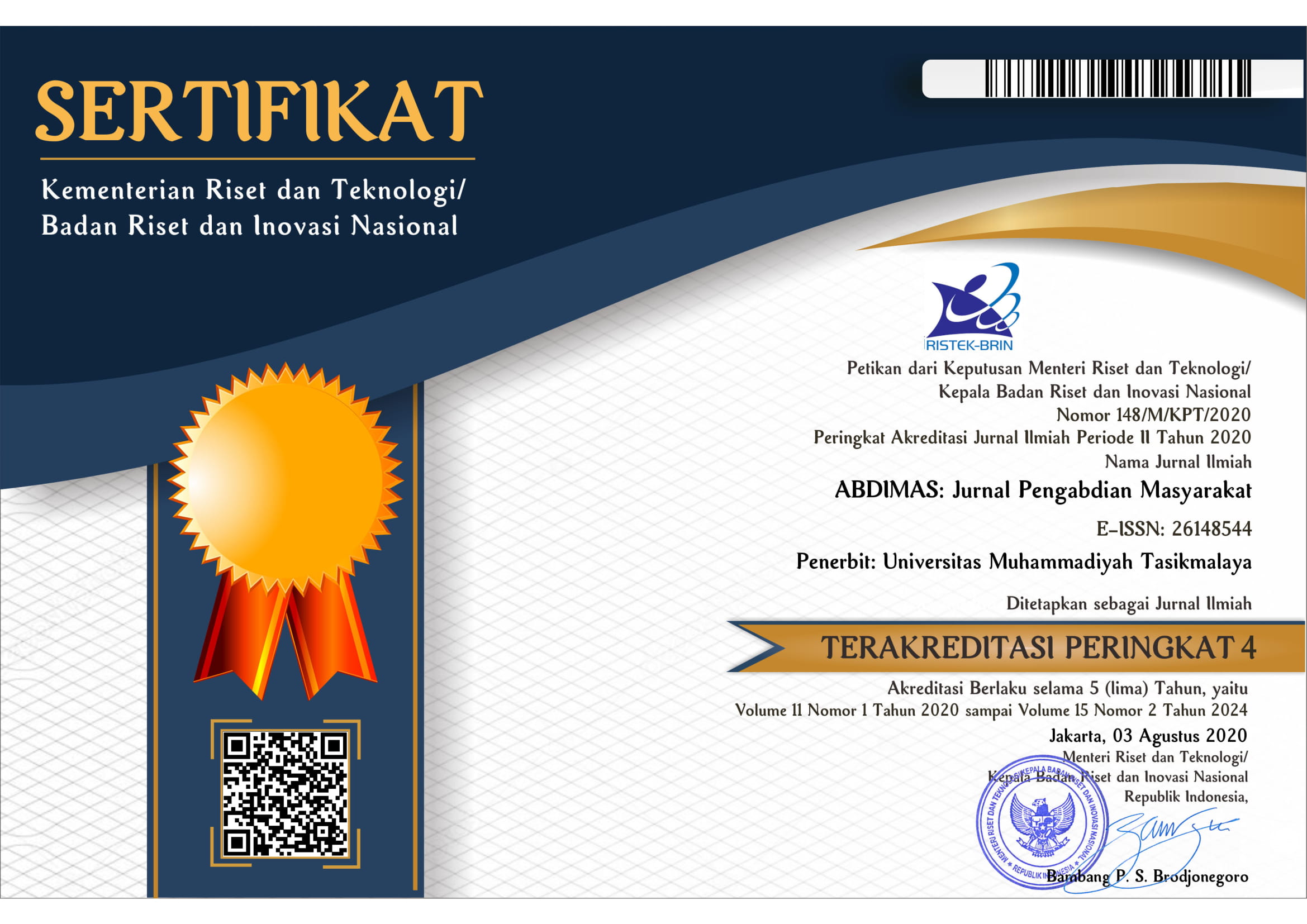The Implementation of Rotary POC Technology for Organic Fertilizer Production in Tarahan Village, South Lampung
DOI:
https://doi.org/10.35568/abdimas.v6i4.4126Keywords:
organic waste, Rotary POC, Fertilizer, Bioactivator, TarahanAbstract
Tarahan Village is one of the larger villages in Katibung District, South Lampung. Despite not being classified as an agricultural region, Tarahan Village exhibits remarkable productivity in cultivating vegetables and fruits. So far, organic waste from fruits and vegetables has been discarded and burned or used only for animal feed. The large volume of unprocessed fruit and vegetable waste causes various problems for village residents, both directly and indirectly. Besides that, the village's intensive horticultural farming activities have encouraged the increased use of inorganic fertilizers. This pollutes the environment and harms the soil, organisms that live in the soil, and humans who consume these horticultural products. The application of liquid organic fertilizer, specifically POC, is deemed necessary to effectively address the issue of fruit and vegetable waste management while ensuring the quality of organic horticultural products. A composter is a suitable technology employed for the production of liquid fertilizer. Since oxygen is crucial for microorganisms in decomposing organic matter, the POC produced through the aerobic composting process will mature more quickly and not produce offensive odors. The goal of implementing this technology is to spread the word that garbage can be turned into something valuable if managed properly, leading to a cleaner community and more economic opportunities. The rotary POC technology scheme consists of a plastic drum that is supported by an iron structure. The drum is furnished with a rotating lever designed for the purpose of stirring, thereby facilitating the uniform mixing of organic material upon the addition of the bioactivator. The agitation of the solution facilitates the efficient execution of the aeration process. The equipment scheme has been developed with the aim of enhancing the effectiveness and efficiency of composting with regard to both time management and the quality of the final outcomes. This technology has the potential to be an alternative solution for dealing with household waste, and the product in the form of POC has the potential to reduce the use of inorganic fertilizers.
Downloads
References
Agustriyana, L., Fuadi, Z., & Yudiyanto, E. (2022). Fabricating Tools and Training on Making Fertilizer from Household Organic Waste for PKK Women RT 15 RW 11 , Banjararum Village , Singosari District , Malang Regency. ABDIMAS: Jurnal Pengabdian Masyarakat, 5(1).
Auriyani, W. A., Fahni, Y., Saputri, D. R., Mawaddah, N., Fajar, M., Novita, E., Asmarani, W., & Ahmad, R. F. A. (2021). Composting of Dry Leaves and Household Kitchen Wastes using Rotary Drum Biocomposter. ABDIMAS: Jurnal Pengabdian Masyarakat, 6(2).
Badan Pusat Statistik. (2021). Luas Wilayah, Jumlah Penduduk, Kepadatan Penduduk, dan Laju Pertumbuhan Penduduk 2010-2015. https://lampungselatankab.bps.go.id/dynamictable/2018/04/16/59/-luas-wilayah-jumlah penduduk-kepadatan-penduduk-dan-laju-pertumbuhan-penduduk-menurut-kecamatan-di- kabupaten-lampung-selatan-2016.html
Basriyanta. (2007). Memanen Sampah. Kanisius.
Fatma, F., Yasril, A. I., & Sari, S. P. (2021). Efektifitas Pengolahan Sampah Organik dengan Menggunakan Aktifator EM4 dan Mol. Jurnal Human Care, 6(1), 95–102.
Lestari, D. P., Agustinur, & Larista. (2022). Training on Cow Manure Liquid Organic Fertilizer Processing and Application on Green Spinach Plants in Alue Ambang Village. ABDIMAS: Jurnal Pengabdian Masyarakat, 5(1).
Nuroini, I., & Istanti, E. (2022). Utilization of Organic Waste into Liquid Fertilizer in Improving the Economy of Citizens to Achieve the Kamtibmas Environment , Kalanganyar Village , Sedati District , Sidoarjo. ABDIMAS: Jurnal Pengabdian Masyarakat, 5(2).
Prihandarini, R. (2004). Manajemen sampah : daur ulang sampah menjadi pupuk organik. Perpod.
Sardiana, I. K., & Adnyana, I. M. (2014). Soil Organic Carbon , Labile Carbon and Organic Carbon Storage under Organic and Conventional Systems of Chinese Cabbage in Baturiti , Bali Indonesia. Journal of Biology, Agriculture and Healthcare, 4(12), 63–71.
Ulfa, S. M., Hakim, L., & Sutrisno. (2018). Pembuatan Pupuk Organik Cair Berbasis Limbah Padat Biogas Pada Peternak Sapi Perah Sekar Sari “Setia Kawan” Desa Tutur Kabupaten Pasuruan. Journal of Innovation And Applied Technology, 4(1), 708–712.














